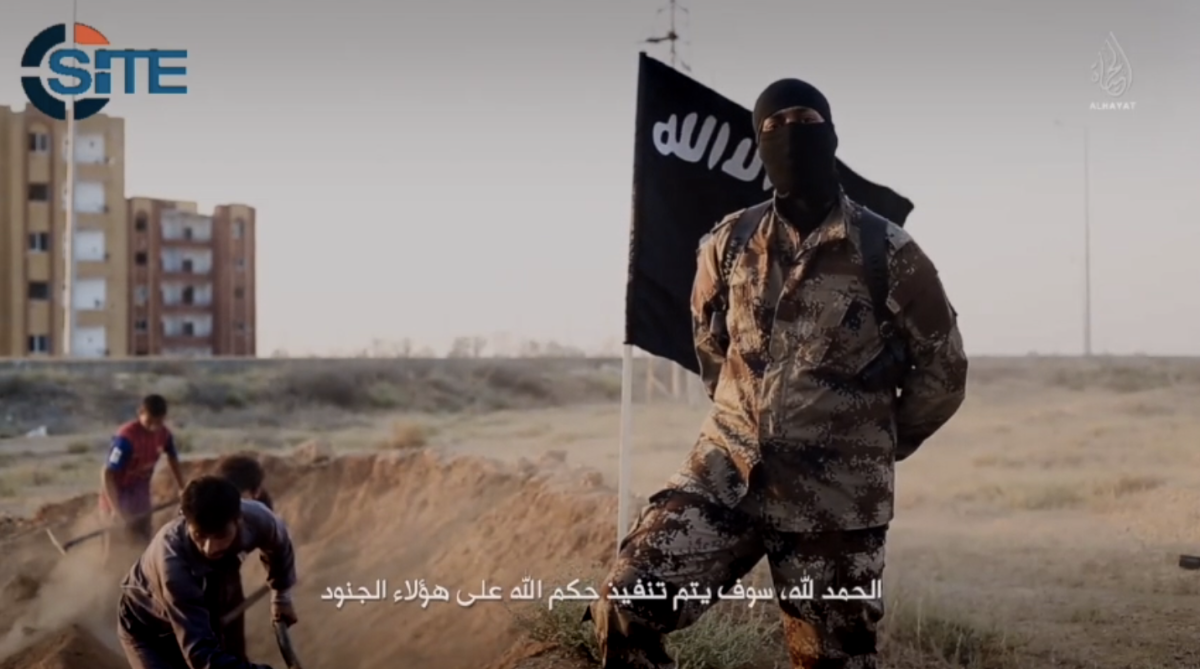For more than four years, authorities have been trying to identify an ISIS member with a distinctly Canadian accent who was narrating the terrorist group’s English-language propaganda.

He voiced videos showing mass executions and may have participated in them. His audio statements claimed responsibility for attacks in Paris and Orlando and threatened more.
Then last weekend Kurdish forces released a video of an ISIS fighter captured in northeast Syria. He said his name was Mohammed Abdullah Mohammed and he had left Canada for Syria in 2013.
On Wednesday, the Syrian Democratic Forces released a second video in which Mohammed spoke at length in English, fueling speculation he could be the long-sought ISIS narrator.
Prof. Amarnath Amarasingam, an expert on Western foreign terrorist fighters, first made the link, saying a longtime friend of Mohammed’s had recognized him in the ISIS videos.
“Based on a few pieces of evidence, I’m fairly certain it’s him,” said Amarasingam, a senior research fellow at the Institute for Strategic Dialogue.
“The voice of the captured fighter in the recent SDF video is almost identical to the voice in the ISIS English-language releases.”
He also said Mohammed’s childhood friend had told him the ISIS fighter was “the voice behind all ISIS releases in English” and that in Toronto he went by the nickname Abu Ridwan.

Get breaking National news
Another captured Canadian ISIS fighter, Muhammad Ali, told Global News last October the Canadian who narrated the ISIS videos was known as Abu Ridwan and he was still alive.
A Kurdish official, however, said Mohammed said he used the name Abu Muthanna Al Muhajir.
WATCH: Toronto-area woman admits in court that attack at Canadian Tire was ‘for ISIS’

In the latest video released by the SDF, Mohammed admitted to joining ISIS, but it was his voice, which was strikingly similar to that of the ISIS narrator, that observers focused on.
“I’m originally from Ethiopia and I came from Canada,” Mohammed said in the video, which showed him with bandages on his forehead that were not seen in the video released immediately after his capture.
He said he had initially been part of a foreign fighter group named Muhajireen Wal Ansar, are later joined up with ISIS. He said he spent “a few years” in Raqqah, the ISIS capital, and moved west during the coalition campaign to retake the city.
Mohammed said he was captured by the SDF “after attacking one of their points and entering into a gun battle with them. After they called me to surrender myself, I surrendered myself.”
The RCMP and FBI began trying to identify the narrator after the gruesome ISIS video Flames of War was released in 2014, which showed a masked man addressing the camera who later appears to execute a prisoner.
The FBI posted a segment of the video on its website in the hope someone might recognize him. He reappeared again in November 2015, narrating the ISIS claim of responsibility for the terrorist attacks in Paris that killed 130.
In June 2016, he narrated the English-language ISIS audio statement on the terrorist attack at the Pulse nightclub in Orlando that left 50 dead. He is also believed to have narrated an ISIS recruitment video tribute to André Poulin, a Muslim convert from Ontario who died fighting in Syria in 2013.
He is believed to have narrated many ISIS audio releases.









Comments